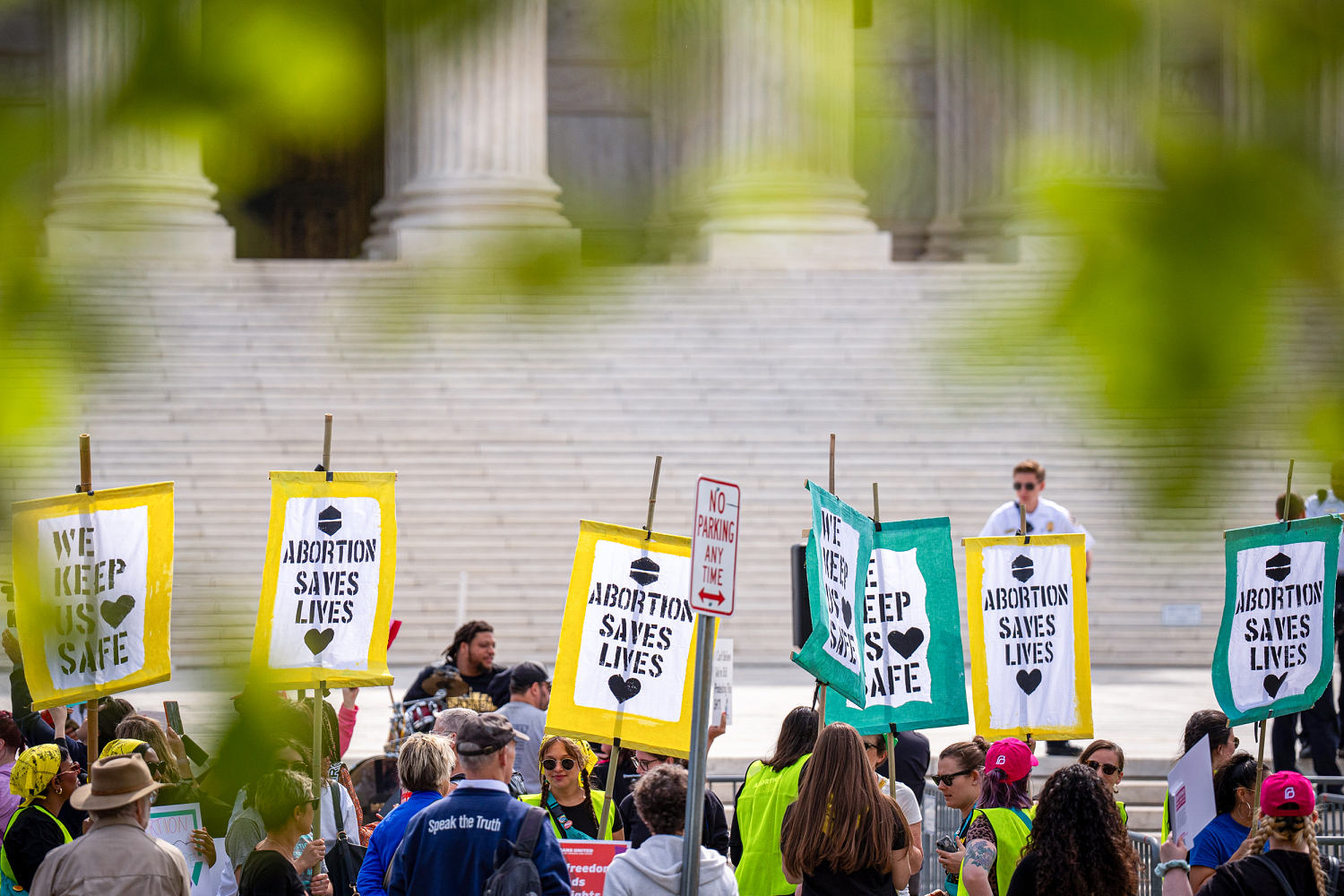
The chances that a woman can see a doctor while pregnant — or during a time when she might become pregnant — have fallen significantly since the Supreme Court overturned Roe v. Wade, according to a new report released Thursday.
The findings, from The Commonwealth Fund, a nonpartisan health care research foundation, show that women living in states with a history of health disparities — often in the Southeast — are affected the most. They are not only less likely to be able to afford a doctor’s appointment; they’re less likely to be able to find an OB/GYN in their area.
“These inequities are long-standing, no doubt,” Dr. Joseph Betancourt, president of The Commonwealth Fund, said during a media briefing Wednesday to discuss the report. “But recent policy choices and judicial decisions restricting access to reproductive care have and may continue to exacerbate them.”
The report looked at more than a dozen measures of women’s health care, including maternal mortality, preterm birth and postpartum depression, in all 50 states in 2022, the year of the Dobbs ruling.
That single action “significantly altered both access to reproductive health care services and how providers are able to treat pregnancy complications in the 21 states that ban or restrict abortion access,” the authors wrote.
States with the most restrictive abortion policies, including Mississippi, Oklahoma, Texas and West Virginia, scored lowest in the new report. States that protected abortion care, including Connecticut, Massachusetts and New Jersey, ranked highest.
Women in states that had not expanded Medicaid coverage were most affected.
“Women’s health is in a very fragile place,” said lead author Sara Collins, vice president for health care coverage and access and tracking health system performance at The Commonwealth Fund. “Our health system is failing women of reproductive age, especially women of color and low-income women.”
Reasons for the disparity are twofold, Collins said. Women living in the lowest-ranking states are less likely to have health insurance to afford doctor’s visits. And even if they can, there aren’t enough OB/GYNs to take care of them.
That is, doctors specializing in obstetrics and gynecology are either leaving states with abortion restrictions or aren’t going there in the first place, experts said.
A 2023 survey of third- and fourth-year medical students found, for example, that such laws were a major deterrent in applying for residency programs in those states.
“It’s not surprising that states with the most abortion restrictions or women’s health policy restrictions are the same states that are having a real dearth of women’s health workforce,” said Dr. Deborah Bartz, an OB/GYN at Brigham and Women’s Hospital in Boston. “People are leaving those states because they can no longer provide the best care for their patients.”
States that expanded Medicaid coverage had higher performances overall, according to the Commonwealth report.
“It’s hard to stress how critical a source of coverage Medicaid is for pregnant women,” said David Radley, senior scientist for the Commonwealth Fund during Wednesday’s briefing.
“Your zip code shouldn’t dictate your reproductive health destiny,” said Dr. Jonas Swartz, assistant professor of obstetrics and gynecology at Duke Health in Durham, North Carolina. “But that is the reality.”

